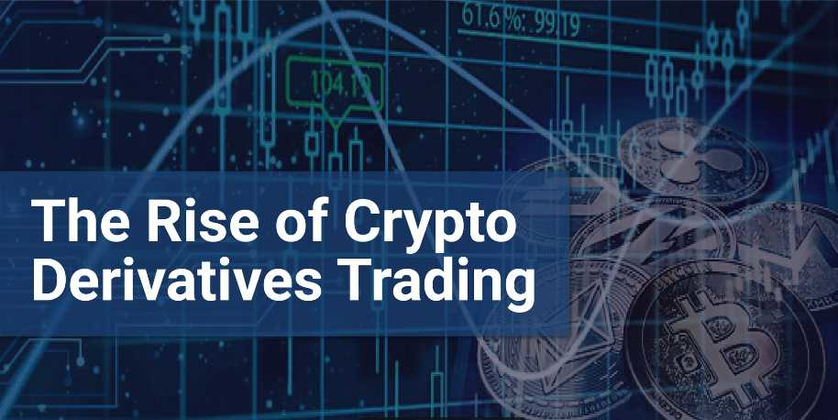(The cryptocurrency market operates on a 24/7 basis, which means you can buy and sell cryptocurrencies anywhere, anytime. So it is crucial to understand trading in the cryptocurrency market. Below introduces cryptocurrencies' two main financial instruments: "Spot" and "Derivatives" to pave the way for you to start trading smart. ~D)
Guide
- What is Spot Trading?
- How to Spot Trade (BingX Platform Guide) - YouTube
- What is Derivatives Trading?
- What is Futures?
- What is Perpetual Futures?
- What is Option?
- How to trade contracts on BingX?
What is Spot Trading?
A spot trade is the purchase or sale of a cryptocurrency for immediate delivery. Delivery means that the buyer and seller fulfill their commitment to the transaction. Spot Trading is characterized by the immediate delivery of cryptocurrencies by the buyer and seller in a successful transaction, satisfying the needs of both sides for trading now.
Examples:
Suppose the spot price of Bitcoin is $40,000 right now, and a buyer is buying one BTC in the spot market, which costs $40,000.
- 📈 Suppose after one month, the price of Bitcoin rises to $60,000.
If the buyer sells the BTC, according to [PnL Amount = (Selling Price - Buying Price) * Trade Volume], ($60,000 - $40,000) * 1 = $20,000, the buyer makes a profit of $20,000.
- 📉 Suppose after one month, the price of Bitcoin falls to $20,000.
If the buyer sells the position, according to [PnL Amount = (Selling Price - Buying Price) * Trade Volume], ($20,000 - $40,000) * 1 = -$20,000, the buyer loses $20,000.
How to Spot Trade on BingX?
The K-line service of the BingX trading platform takes the spot market data from many mainstream exchanges, and synthesizes them to achieve an absolutely fair K-line. If you want to trade in the spot market on BingX, please visit BingX App [Buy/Sell - Spot] .You can also watch the below Spot Trading video to learn about the Spot Trading process.
After understanding spot trading, coming up is derivatives trading.
Before cryptocurrency, derivatives are already the popular financial instruments in the traditional financial industry. Derivatives cover a wide range of assets, such as financial products of underlying instruments like stocks, bonds, commodities, currencies, market indices, and cryptocurrencies. Unlike spot trading, derivatives offer leveraged trading, allowing investors to increase their potential profits. However, it should be noted that margin trading (the user trades with borrowed funds) also increases the investment risk, and the margin may be liquidated. As a result, derivatives are also considered to be high-risk assets.
What is Derivatives Trading?
Derivative is a financial contract between two or more parties with a value derived from a single or a group of crypto assets. Derivatives include futures contracts, options, warrants, forwards contracts, swaps, etc. There are different trading methods and uses for different derivative financial instruments.
Currently, the mainstream derivatives in the cryptocurrency market are futures contract, perpetual futures, and option contract.
What is Futures?
Futures, an early derivative product launched in the cryptocurrency market, is the most traded derivative today. There are two types of futures in the cryptocurrency market: Delivery Futures and Perpetual Futures, which are currently the most popular products in the cryptocurrency market.
Futures is traded with leverage on margin trading, allowing investors to take higher risks and profit from the price fluctuations of different crypto investments. Margin trading is performed by the investor with the trust provided by the broker or the exchange. Margin trading uses the principle of leveraged investment, allowing small capital as a margin to amplify your potential profits while trading, and also magnifying your potential risk of loss, enabling investors with limited capital to trade in the financial markets.
Unlike the spot market, you trade contracts in the futures market but do not own the crypto asset. In fact, futures is designed to avoid market volatility. When you trade the BTC/USDT contract, you are not buying or selling BTC but trading based on the predicted value of BTC. In other words, you are betting on the changes of BTC price parallel to the contract value, and do not own the asset.
In short, contract is a crypto asset derivative that allows users to choose to buy and long or sell and short to profit from the rise or fall of digital asset prices by judging the market.
In the cryptocurrency market, contracts can be divided into USDT-Margined Contract and Coin-Margined Standard Futures in terms of margin trading.
- USDT-Margined Contract
The USDT is used to open positions and for final delivery. Whether you long or short a contract, you only need to deposit USDT in your contract account, and the final profit or loss will be settled in USDT.
- Coin-Margined Standard Futures
Coin-Margined Standard Futures means that the corresponding cryptocurrency is used to open positions and for final delivery. For example, if you want to long or short BTC, you need to deposit BTC in your contract account, and the final loss or profit will be settled in BTC.
In general, investors can choose the contract type according to the trend. When the short-term price is up, you can choose to long the Coin-Margined Standard Futures; when the short-term price is down, you can choose to short the USDT-Margined Standard Futures.
What is Perpetual Futures?
Perpetual Futures is an innovative derivative in the cryptocurrency market similar to Delivery Futures. However, there is no delivery date for Perpetual Futures, and users can hold them forever. The exchanges will generally adopt funding rate to ensure long-term convergence between Perpetual Futures price and Spot price.
The funding rate is the settlement of funds between all longs and shorts in the Perpetual Futures market, which is settled every 8 hours. If the funding rate is positive, the longs pay funds to the shorts. If negative, the shorts pay to the longs.It can be considered as a fee for the trader to hold a contract position or a refund. This mechanism balances the demand for Perpetual Futures between buyers and sellers and keeps the price of Perpetual Futures largely in line with the price of the crypto asset. Perpetual Futures is currently the mainstream of cryptocurrency exchanges, with leverage of up to 125x, and is the most popular derivative in the market now.
From trading perspective, it is divided into long position and short position.
- Long Position = Buy Up
When you think the value of the contract or the price of the crypto will rise in the future, you can choose to long the contract and make a profit if the crypto price rises in the future.
- Short Position = Buy Down
When you think the value of the contract or the price of the crypto will fall in the future, you can choose to short the contract and make a profit if the crypto price drops in the future.
Examples:
Suppose a buyer thinks that the price of Bitcoin will rise in the future and opens a long position with 5X leverage and chooses [Isolated Margin]. The following scenarios will happen:
- 📈 When Bitcoin price rises by 10%, the buyer closes the position with a 50% profit.
- 📉 When Bitcoin price drops by 10%, the buyer closes the position with a 50% loss; when Bitcoin price drops by 20%, the buyer suffers from forced liquidation with a 100% loss. If the buyer chooses [Isolated Margin], the buyer's margin will be zero.
Suppose a buyer thinks that the price of Bitcoin will drop in the future and opens a short position with 5X leverage and chooses [Isolated Margin]. The following scenarios will happen:
- 📉 When Bitcoin price drops by 10%, the buyer closes the position with a 50% profit.
- 📈 When Bitcoin price rises by 10%, the buyer closes the position with a 50% loss; when Bitcoin price rises by 20%, the buyer suffers from forced liquidation with a 100% loss. If the buyer chooses [Isolated Margin], the buyer's margin will be zero.
What is Option?
Option is a derivative product that gives a trader the right, but not the obligation, to buy or sell an asset at a specific price in the future. The main difference between Futures and Option is that the trader is not obligated to settle the Option.
Option Contract (or Option) is very similar to Futures as they also include an agreement between two parties to buy and sell cryptocurrencies at a predetermined price and date. However, the main difference between these two derivatives is that the holder does not necessarily have to buy or sell on the date of maturity. To enter into an Option, the trader must pay a premium. If they do not want to exercise their rights at the end of the contract, they must still pay the premium.The innovation of Option in the cryptocurrency market enables traders to trade Options in a shorter specified time.
Options can be divided into two main types: Call Options and Put Options.
Call Option: Buy a specific amount of a particular cryptocurrency at a specific price for a certain period or at a certain point in the future.
Put Option: Sell a specific amount of a particular cryptocurrency at a specific price for a certain period or at a certain point in the future.
Examples:
Suppose the Bitcoin price is now $60,000, and the buyer purchases a call option with a strike price of $70,000 for a premium of $200.
- 📈 Suppose the Bitcoin price rises to $80,000 at expiration.
If the buyer exercises the option, according to [PnL Amount = BTC Spot Price - Strike Price - Premium], [(80,000 - 70,000) - 200 = $9,800], the buyer makes a profit of $9,800.
- 📉 Suppose the Bitcoin price falls to $50,000 at expiration.
If the buyer exercises the option, according to [PnL Amount = BTC Spot Price - Strike Price - Premium], [(50,000 - 70,000) - 200 = -$20,200], the buyer loses $20,200. However, one crucial feature of Options is that [when the buyer purchases an option, they are buying a right to execute, and the buyer can choose not to execute at expiration], so if the buyer decides not to execute at expiration, they will only lose $200 premium.
How to trade contracts on BingX?
As the world's leading derivatives trading platform, BingX provides the ultimate derivatives trading services, mainly Standard Futures and Perpetual Futures, suitable for ordinary and advanced investors in cryptocurrencies.
Standard Futures supports USDT-Margined Contract and Coin-Margined Standard Futures, which is easy to use and suitable for beginners or ordinary investors to get started quickly.
Perpetual Futures currently supports USDT-Margined Standard Futures, allowing users to complete tighter limit strategies, position management, etc., and is suitable for advanced investors.
Below is a great video with some tips to live by and shows common mistakes made by newer traders...
OR.. and here is one of my favorites, Copy Trading.. But do your research on his/her past trades and their profit sharing commission. The more you make, the more they make so it is beneficial for both parties.
I do hope this helps some of you with building your wealth portfolio...
Best of Luck, and remember trade smart and be patient! ~D
The Dinarian On Locals is a labor of love that I pour my heart and soul into during my personal time. Countless hours are dedicated to delivering you the most up-to-date, unfiltered, and authentic news and information. Your support means the world to me, and I invite you to consider making a donation or becoming a dedicated supporter of this project. Any amount of XRP donations can be sent to XRP address: rqEy1PDACRg3p9RaVEZz6jU1g9RgguP91 or by scanning the QR code below and are not only appreciated but needed... No amount is too little and every one helps. Those that know me personally know that I would not be asking this if I had any other option. To those already backing my efforts, I extend my deepest gratitude. Your generosity fuels this mission and keeps a roof over my families heads, and I genuinely thank you from the depths of my heart. Together, we can continue to bring you the best results and make a positive impact in everyones future moving forward! ~ Namaste🙏🏼The Dinarian




























